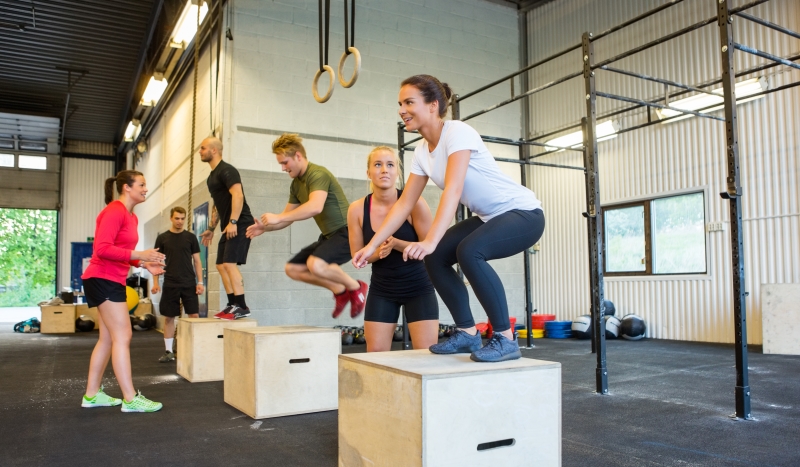Hitt Training for Skiers

You need to be strong, flexible and have a good level of cardiovascular fitness to excel out on the slopes. This is where HIIT comes into it's own.
Skiing is a sport your need to be physically fit for. With HIIT training being all the rage in 2018 we asked the leading personal trainers for some specifics on exactly what all the fuss is about!
Creating a specific training plan to get you in peak condition to go skiing will not only improve your endurance and performance, but it can help protect you from injury.
The two types of training you should be focusing on to improve your ski fitness are High Intensity Interval Training (HIIT) cardio and strength training.
For this article, we will focus on how and why you should be using HIIT training to get yourself ready for tackling even the toughest black runs.
What is HIIT Training?
HIIT training involves bursts of short and super high-intensity periods of exercise followed by low intensity recovery periods.
HIIT training comes in a number of different formats with different work-rest ratios, but a standard HIIT training typically means using sets of maximum effort exercise between 15-60 seconds followed by rest periods between 45-180 seconds.
Rest periods can be split into two categories – complete rest or ‘active rest’, where you perform low intensity activity like walking or a slow cycle.
What are the benefits of HIIT?
1.HIIT Training Is Time Efficient
If you need to get in shape quickly, or you don’t have much time in your weekly schedule to train, HIIT training is an incredibly time-efficient way to improve your fitness.
Contrasted with steady-state cardio like jogging or cycling, HIIT training takes much less time to expend a similar amount of calories while also imparting serious performance benefits.
A HIIT protocol like Tabata training, which includes eight sets of 20 seconds work punctuated with 10-second rest periods, can take as little as four minutes compared to 30-40 minutes of jogging.
2. HIIT training quickly improves important health markers
You can improve your health and fitness with all forms of exercise, but HIIT training is a great starting point for someone serious about making big strides in increasing their fitness levels as it needs minimal equipment and time requirements.
A sizeable body of scientific research into the effects of HIIT training has demonstrated the beneficial effects of HIIT on cardiovascular fitness through improvements in VO2 max (your maximal aerobic capacity), cholesterol, blood sugar management and blood pressure.
3. HIIT training can be done any time, anywhere
HIIT’s incredible effectiveness for fitness comes from your training intensity (how hard you work) rather than the specific type of cardio equipment that you perform it on.
This means that, so long as you’re working hard enough, HIIT fitness equipment ensures it's ideal to perform any time, anywhere – on your lunch break, before work in the local park, or after a strength training session in the gym.
What Are The Best Ways To Do HIIT?
The beauty of HIIT training is that it is incredibly versatile and can be performed using a wide range of exercises.
In fact, varying the way you do HIIT over time will keep your workouts interesting, exciting and challenging, while avoiding injuries from overuse.
Here are the leading exercises you can employ for HIIT training:
- Exercise bike
- Rowing machine
- Cross trainer/Elliptical
- Modified strongman equipment, e.g. prowler sled, battle ropes, tyre flips, etc.
- Bodyweight exercises – burpees, squat jumps,
These five options are simple and safe, which will allow you to train hard without injuring yourself.
There is one glaring omission. Sprinting is not on the list because most people fail to ease into it properly and an injury or strain can really halt your progress.
But if you’re happy sprinting, and you have solid technique, by all means use this as an option.
Hill sprints and treadmill sprints (sprinting on a turned-off treadmill) are also a safer alternative.
HIIT Workout For Skiing
Once you have selected the type of cardio exercises you want to factor into your skiing HIIT workout programme, you’re ready to go.
Here is a sample workout that you can do.
A1 - 3 x 20 seconds / 60-120 seconds rest
B1 - 10-15 mins (LISS)
C1 - 3 x 60 seconds / 120-180 seconds rest
D1 - 10-15 mins (LISS)
The A1 and C1 sets in bold are your HIIT sets.
The B1 and D1 sets non-bolded are your Low-Intensity Steady-State (LISS) sets which allow you to rest, recover and recharge between HIIT sets, then cool down at the end effectively.
The workout above is a guide and you can tailor the number of sets and the work-rest ratio depending on your fitness levels and specific goals.
You may need a slightly longer rest when you first start your HIIT workouts, for example.
When you become fitter and need to keep pushing yourself, you might want to add additional sets to keep progressing.
Some exercises (like sprinting) may be more taxing than others (like the elliptical) which may necessitate shorter training intervals and longer rest periods.
Lastly, it’s wise to perform HIIT workouts like this just 1-2 times a week, either after your strength training workouts or on non-training days.
If your outside of London Ultimate Performance have facilities across the world, but they now also offer their best in class personal trainers via online personal training sessions.